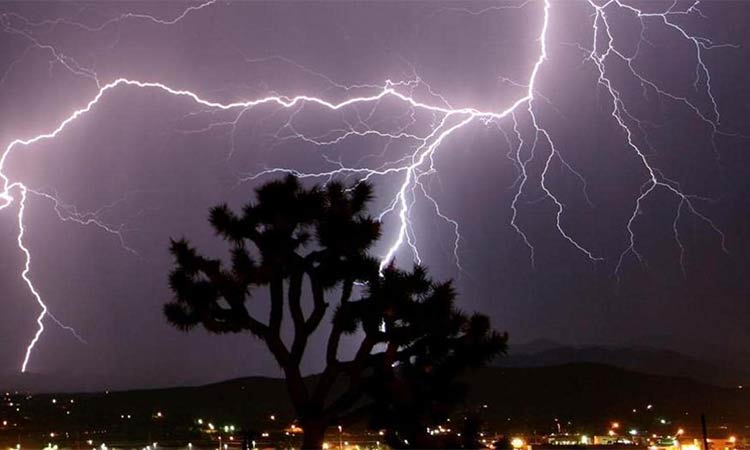Laser beams directed at the sky can help divert lightning strikes

Picture used for illustrative purposes.
Scientists have demonstrated in a first that a powerful laser beam directed at the sky can create a “virtual lightning rod” that can divert the path of lightning strikes. The research, published on Monday in the journal Nature Photonics, may lead to improved lightning protection methods for critical infrastructure like power stations, airports, and launchpads.
Until now, the most commonly used lightning protection device is the Franklin rod, which is an electrically conducting metal pole on top of buildings and other infrastructure that intercepts lightning discharges and guides them safely to the ground, scientists, including those from Ecole Polytechnique in France, explained.
In the new study, they showed that a powerful laser beam directed at the sky could act as a virtual, movable rod and offer an alternative. While earlier lab experiments have shown that intense laser pulses can guide lightning strikes, researchers say no field studies have previously experimentally demonstrated guiding lightning using such powerful light beams, according to the Independent.
To test this, scientists, including Aurélien Houard from Ecole Polytechnique conducted experiments during the summer of 2021 on the Säntis Mountain in northeastern Switzerland. They installed a laser device called the Laser Lightning Rod (LLR) – the size of a large car – that could fires up to a thousand pulses per second near a telecommunications tower which is struck by lightning about 100 times a year.
The device, according to the scientists, generates channels of ionised air with charged particles that can be used to guide lightning along its beam. By extending upwards from a traditional lightning rod, they say the LLR device could increase its height virtually and the surface of the area it is protecting. “When very high power laser pulses are emitted into the atmosphere, filaments of very intense light form inside the beam,” study co-author Jean-Pierre Wolf said in a statement.
“These filaments ionise the nitrogen and oxygen molecules in the air, which then release electrons that are free to move. This ionised air, called ‘plasma,’ becomes an electrical conductor,” Dr Wolf explained. Scientists then compared the data collected when the laser filament was produced above the tower as well as when the tower was struck naturally by lightning. They observed that the laser could divert the course of four upward lightning discharges in over 6 hours of operation during a thunderstorm.
The findings were also corroborated using electromagnetic waves generated by the lightning to locate the strikes. Researchers could also record one of the strikes using high-speed cameras which revealed the strike followed the laser path for over 50m. “From the first lightning event using the laser, we found that the discharge could follow the beam for nearly 60m before reaching the tower, meaning that it increased the radius of the protection surface from 120m (390ft) to 180m (590ft),” Dr Wolf explained.
Based on the results, scientists say the findings extend the current understanding of laser physics in the atmosphere. They say the results of the study may aid in the further development of novel lightning protection strategies. According to a report last year, India saw a big jump in extreme weather events such as heatwaves and lightning strikes and related deaths rose to their highest in three years, government data showed, with scientists blaming climate change for the heavy toll.
There were nearly eight times as many heatwaves, 27 in all, and lightning strikes rose more than 111 times, killing 907 people, the Ministry of Earth Sciences said in a report to parliament. Thunderstorms increased more than five times to 240. Last year’s 2,183 deaths due to such events were the highest since 2019’s 3,017. Lightning and floods and heavy rains accounted for 78% of the deaths this year, the data showed.
Temperatures during India’s monsoon season have risen this century and the country could see more frequent heatwaves in future, the government said in August. India is the world’s third-largest carbon polluter, though its per-capita emissions are much lower than many developed countries. The country of nearly 1.4 billion suffered its hottest March in more than a century and temperatures were unusually high in April and May, blamed mainly on climate change.
The World Health Organisation says that from 1998-2017, more than 166,000 people died due to heatwaves globally. It says that between 2030 and 2050, climate change is expected to cause about 250,000 additional deaths per year from malnutrition, malaria, diarrhoea and heat stress. In June last year, the government of eastern Indian state of Bihar expressed grief over the death of 17 persons in lightning and thunderstorm and announced an ex-gratia of Rs400,000 ($5,130.50) for the family members of each of the victims.
Agencies



